
2 minute read
The Tsuzuri Project
[ Production Process ]
1. Input
Segmented capturing of high-resolution data of a precious cultural asset
2. Color Matching
The captured image is color matched with the original on site
3. Output
The resulting image is output using world-class printing technology that reproduces fine textures
High-resolution facsimile of “Tigers in Bamboo Grove,” a 17th century painting on sliding doors by Kano Sanraku and Kano Sansetsu at Tenkyuin Temple. The original is housed at the Kyoto National Museum.
4. Gold Leaf, Gold Paint and Mica
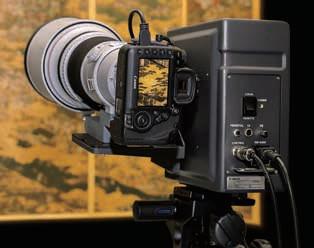
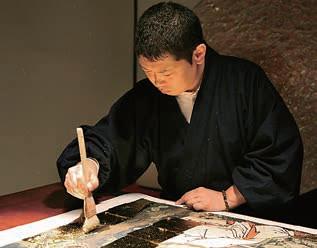
The degradation of colors over time is reproduced through traditional craft techniques
5. Mounting
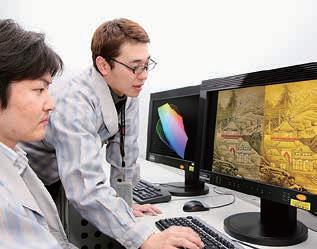
Works are mounted using the timehonored techniques of Kyoto master craftsman
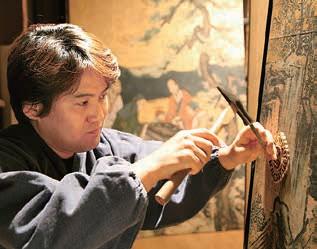
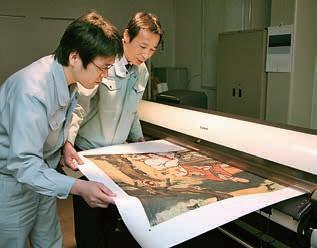
Scan to access a special video and learn more about the Tsuzuri Project.
Intellectual Property Activities
Protecting
Intellectual Property
Common refrains heard within Canon’s research and development division include, “Read patent bulletins rather than research literature” and “Create draft patents rather than reports.” Intellectual property management protects proprietary technologies while expanding the number of technologies that Canon can access through such means as cross-licensing to enhance product development capabilities.
Canon in the Top 5 Among U.S. Patent Recipients for 33 Consecutive Years and Top Japanese Company for 14 Years
Canon believes that acquiring patent rights for its proprietary technologies is an essential aspect of expanding operations globally. Every year, Canon engineers submit more than 10,000 ideas with patent applications filed by country and region. In the United States, Canon has been the top-ranked patent recipient among Japanese companies for 14 straight years. Canon’s intellectual property strategy consists of a defensive approach: protecting Canon’s proprietary core technologies from being infringed upon by others, and an offensive approach: to create advantages for Canon’s operations by acquiring valuable patents that other companies, not just Canon, need to use, and then negotiating licenses for their use. Canon strengthens its product development capabilities through both defensive and offensive intellectual property management.
Number of U.S. Registered Patents Figures tabulated by Canon
Year 2018
2017 2016 2015 2014
2013 2012 2011 2010
2009 2008 2007 2006 Rank overall 3rd 3rd 3rd 3rd 3rd 3rd
3rd 3rd 4th 4th
3rd 3rd 3rd Rank among Japanese companies 1st 1st 1st 1st 1st 1st 1st 1st 1st 1st
1st 1st 1st No. of patents 3,285* 3,056*
4,134 4,048 3,820 3,173 2,818 2,551 2,200 2,107 1,983 2,366 3,665*
Patent Strategy to Tackle Xerox’s Monopoly
Canon’s emphasis on intellectual property rights dates back to the 1960s, when the company entered the copying machine market.
In order to break through the airtight patent wall that U.S.- based Xerox had erected for its copying machines, Canon succeeded indeveloping the NP method, an all-new electrophotographic technology that did not infringe on Xerox’s patents. Canon obtained a patent for the NP method. By protecting the differentiated proprietary technology, and also acquiring patents for peripheral technologies, Canon put itself in the position to be able to negotiate license agreements for other companies’ technologies that Canon needed. This experience created the foundation for Canon’s intellectual property strategy and has been passed down through the generations as part of Canon’s corporate DNA.










